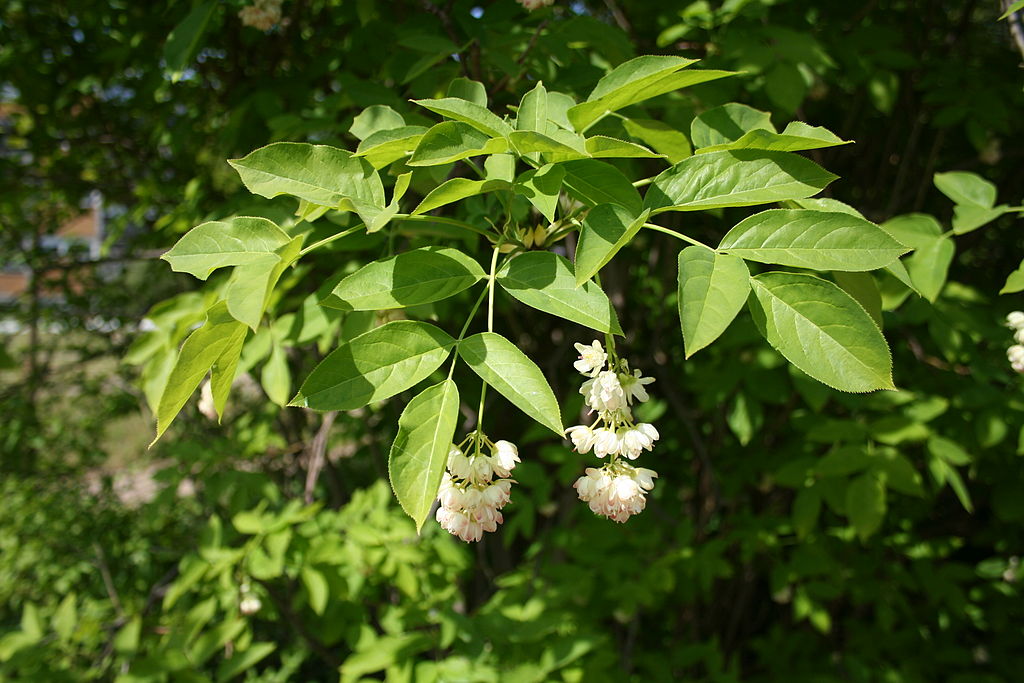Staphylea pinnata: Red Data Book of Armenia

VU* B 1 ab(iii) + 2 ab(iii)
Category. Vulnerable species. The extent of occurrence is less than 5000 km2, the area of occupancy is less than 500 km2. Since the general area is beyond the borders of the republic, the category of threat has been downgraded to VU. It was included in the first edition of the Red Data Book of Armenia under Category 1: Endangered species. It is not included in the Annexes of CITES and that of the Bern Convention.
Description. Shrub or small tree 2–6 m, with furcated yellowish– grayish–brown branches and green herbaceous annual shoots. Leaves long–petiolate, imparipinnate, of 5–7 broadly lanceolate or elliptic, glabrous, dentate leaflets, dark green from above, light from below. Inflorescence – long, nodding, compound raceme. Flowers white. Fruit – inflated capsule with convergent tips of valves.
Distribution. In Armenia it grows only in Idjevan (Idjevan, Barekamavan, Sevqar, Shamshadin, Bagratashen) floristic region. EOO is 600 km2, AOO is 24 km2. Locations are 3. Besides Armenia the species grows in Ciscaucasia, East and West Transcaucasia, Europe, Mediterranean Sea basin, Balkan Peninsula and Asia Minor.
Ecological, biological and phytocoenological peculiarities. Grows in lower mountain belt, at the altitudes of 600–950 meters above sea level, generally in hornbeam forests, where it is sometimes considered dominating species in the forest undergrowth. Flowering from May to June, fruiting from June to August.
Limiting factors. Restricted extent of occurrence and area of occupancy, loss/degradation of habitats caused by the forestry activities, use as an edible species and as supporting sticks in the vegetable gardens by local population.
Conservation actions. No conservation actions. Necessary: establishment of specially protected nature area (40 ha) in the neighborhoods of the village Barekamavan.
Suggestions
 The Ministry of Environment sent a letter international partners to draw their attention to the real danger of environmental disasters as a result of Azerbaijan's large-scale aggression towards the territory of Armenia
The Ministry of Environment sent a letter international partners to draw their attention to the real danger of environmental disasters as a result of Azerbaijan's large-scale aggression towards the territory of Armenia
 Vicia pisiformis: Red Data Book of Armenia
Vicia pisiformis: Red Data Book of Armenia
 Vavilovia formosa: Red Data Book of Armenia
Vavilovia formosa: Red Data Book of Armenia
 Trigonella capitata: Red Data Book of Armenia
Trigonella capitata: Red Data Book of Armenia
 Trigonella astroides: Red Data Book of Armenia
Trigonella astroides: Red Data Book of Armenia












